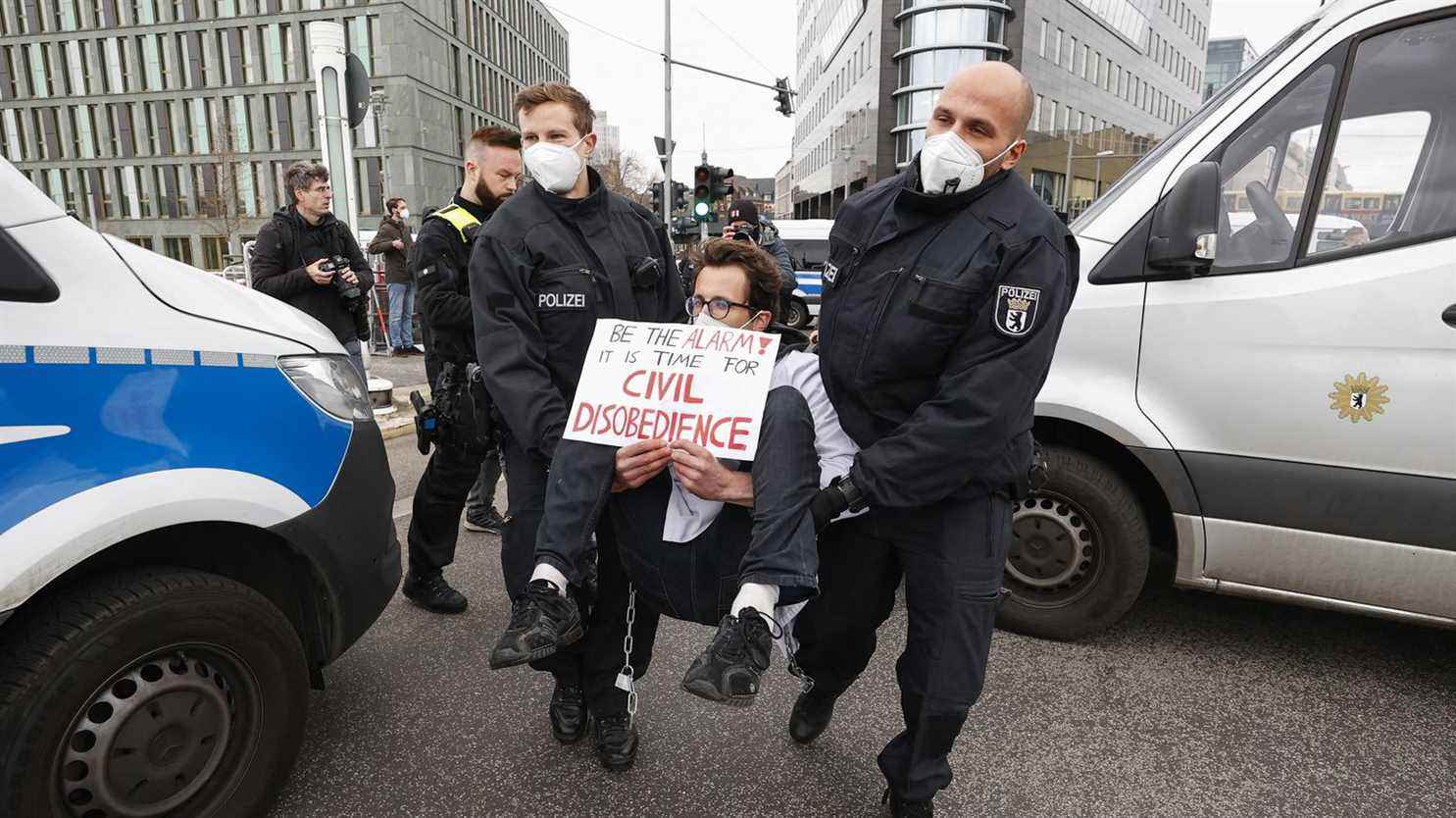Sounding the alarm bell is no longer enough for them. Since the beginning of April, scientists from around twenty countries united in Scientist Rebellion, inspired by Extinction Rebellion, have been launching actions of civil disobedience in order to underline the urgency of taking action for the climate.
On Saturday, scientists from the movement were present at the National Museum of Natural History in Paris.
Scientist Rebellion: twenty academics, environmental activists, disrupted the closure of the Natural History Museum in Paris. They call for civil disobedience for urgent action against global warming #AFP pic.twitter.com/RPEBQB5K3j
— Taimaz Szirniks (@Taimaz) April 9, 2022
The start of their campaign was based on the publication of the report by UN climate experts (IPCC), on solutions to reduce greenhouse gas emissions.
Non-violent actions have been announced against leading universities, research centers and scientific journals, to encourage all their staff to speak out louder and fight against what the group describes as an existential threat to the world. ‘humanity. “If we say it is an emergency, we must act accordingly”, pleads Charlie Gardner, specialist in tropical biodiversity at the British University of Kent. Scientist Rebellion hopes to see “high levels of civil disobedience” from a thousand scientists around the world.
On Wednesday, scientists thus blocked the entrance to a building of the JP Morgan Chase bank in Los Angeles (United States). “We chose JP Morgan Chase because of all the investment banks in the world, JP Morgan Chase finances the largest number of new fossil fuel projects,” justifies one of the scientists, Peter Kalmus, to the Guardian. The climatologist explains that he was arrested for his action.
A growing number of scientists are willing to risk arrest in a desperate bid to get leaders to act on the climate crisis. Listen to climate scientist Peter Kalmus @ClimateHuman choke up as he and others at @ScientistRebel1 block an entrance to @Chase in LA today. through organizers pic.twitter.com/60qPe7RFuj
— Catrin Einhorn (@CatrinEinhorn) April 6, 2022
The Scientist Rebellion group was created in 2020 by two PhD students in physics from St Andrews College, Scotland. During their first major action a year ago, a hundred scientists attacked the giant of scientific publication Springer Nature and the British Royal Society. During COP26 in November 2021, several of their members were arrested.
With a warming of approximately +1.1°C since the pre-industrial era, the world is already the victim of a multiplication of extreme events, heat waves, droughts, floods or storms. And this is only the beginning, as shown by the first two parts of the IPCC on the physics of climate and the impacts published recently.
